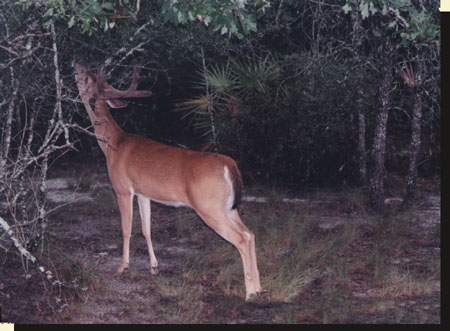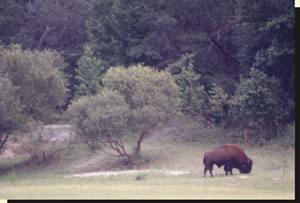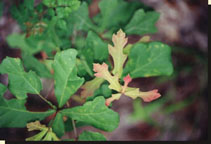
This buck is browsing for tender leaves and shoots.
Whitetails, like all deer, have incisor teeth (the cutting teeth in front) on only the bottom jaw, and a cartilage pad on the front of the upper jaw (They have molars on both upper and lower jaws.) This tooth pattern causes them to pull out the grass rather than shearing it like the specialized grazers do. The tender base of the grass is low in fiber, more nutritious and more digestible. So while whitetail can digest some of the grasses' most tender shoots, overall they would not thrive on grass alone.
 |
Our buffalo's diet of coarse grasses would starve a whitetail. |
Many of the foods, even the good ones, that deer eat have poison in them, for example, the tannins in acorns and oaks. But the foods are eaten in small amounts or are eaten when the plants are young so that they have a lower level of the toxins, and in some cases the toxins are balanced and neutralized by other vegetation so that they are not harmful. When tender shoots mature, they become tougher, have more fiber, have less nutrition and are more toxic—-this is the plant's strategy for self protection, and how they discourage animals from eating them.

Here you can see this oak's tender new leaves as well as the tough, toxic mature leaves. |